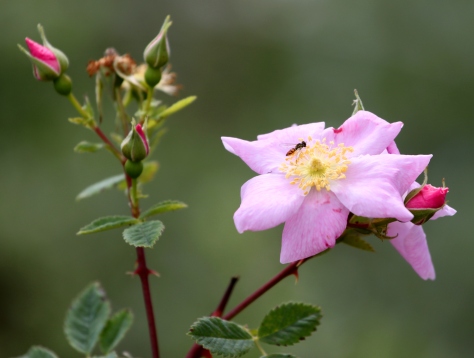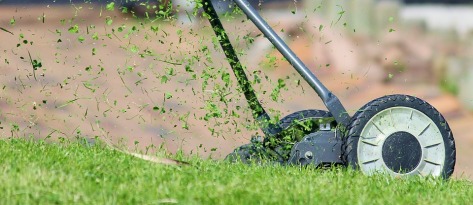It’s February and love is in the air. It’s the perfect time to spend some time nourishing the garden. One of the primary tasks for a gardener at this time of year is caring for the soil. A little preparation now will ensure success later in the year. First, asses the state of your soil. Is it sandy or clay based, acidic or basic, fluffy or compact?

- To help neutralize overly acidic soil, add lime. This must be done at least a month before planting.
- For soil that is too basic, add Michigan peat or mini pine bark nuggets.
- If your soil has become too compact, add Michigan peat and organic mushroom compost.
- Too much sand or clay? Try Michigan peat! It’s a great way to add organic material.
Although it can be tempting to cut back all frost damaged plants, it’s best to wait until early spring, after the last frost. Some things, however, can be pruned earlier on. February is a suitable time to prune evergreens, summer flowering shrubs, and landscape trees as needed. Overcrowded perennials, ferns, and groundcovers may be divided and replanted or shared with friends. If you have extras, consider sharing with a local community garden.

Roses
- Prune hybrid tea roses by removing the top growth, 18-24 inches above the ground. Be sure to retain several healthy canes. Make clean cuts directly above buds which point outward, so that new lateral growth will branch outward.
- Lightly prune climbing roses after their first major spring bloom.
- Fertilize roses after pruning. Make sure to water well after fertilizing.

Lawn Care
- Keep winter weeds mowed. This will prevent them from dropping more seeds that will sprout again next year.
- Apply pre-emergent weed control to prevent existing summer-weed seeds from sprouting. Only use pre-emergents on established lawns.

Herbs and Vegetables
- Mid-February is an excellent time to plant seed potatoes. Plant small pieces, with 2-3 eyes each. As the potato grows, mound dirt around the base of the stem.
- Plant onion sets. As the bulbs mature, the greens can be used as a garnish.
- Sow seeds of beets, mustard, parsley, endive, escarole, carrots, collards, English peas, lettuce, radishes, turnips, and sugar snap peas.
- Plant starters of broccoli, Brussel’s sprouts, cabbage, cauliflower, celery, collards, and onions.
- Indoors: Start seeds of lettuce, tomatoes, peppers, eggplant, onions, garlic, cucumbers and herbs.

Fruit
- To prevent problems with scale, spray fruit trees with horticultural oil.
- Prune and fertilize grape vines.
- Fertilize blueberry bushes after they finish blooming.
- Early in the month, prune plum and peach trees.
- Fertilize citrus trees, apples, peaches, nectarines, plums, pears, pecans, Chinese chestnuts, and blackberries.
- Plant bare-root fruit and nut trees, grapes, blueberries, and blackberries.

